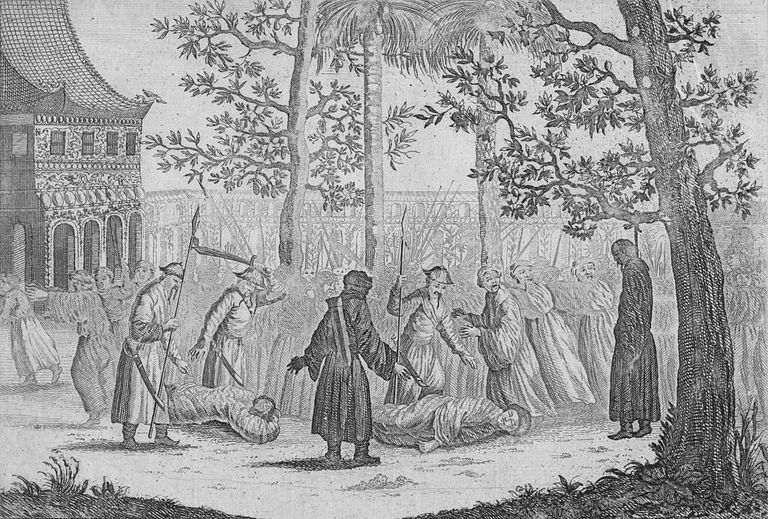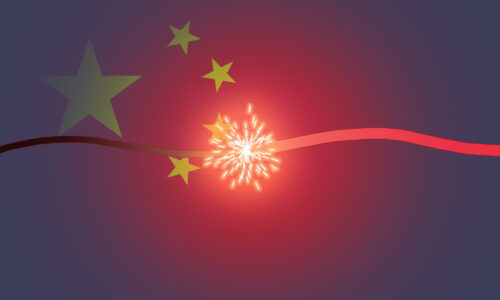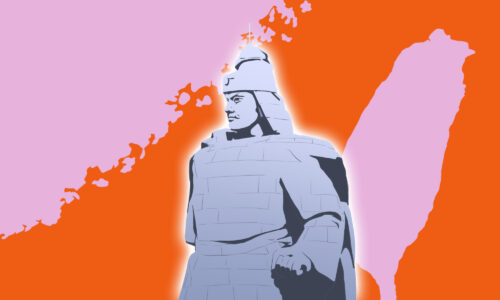China’s rise and fall as explained by two historical cycles

This week’s column comes from one of Kaiser’s answers originally posted to Quora on October 17, 2013:
History of China: Why did the Ming Dynasty fall?
Historians of China like to speak of two historical cycles.
On the one hand there’s the dynastic cycle, which describes the arc of a typical Chinese dynasty from initial vigor — marked by an attentive and conscientious governing style, martial prowess and economic prosperity — to, in its waning years, weaker emperors removed from the daily duties of the office and out of touch with real conditions in the country, dissolute and distracted by the pleasures of the seraglio, paralyzed by court factionalism (often pitting the families of powerful court women against the eunuchs), and so forth. This leads, in the typical 200- to 300-year run of a dynasty, to economic troubles as granaries, irrigation systems, transportation networks, and communications are not adequately maintained. The armed forces, which decline with the vigor of the throne, are unable to maintain control over the inevitable peasant uprisings that begin as famine and disease and other catastrophes spread, the government unable to deal with these crises. The “mandate of heaven” is lost, and a new dynastic power assumes the throne.
The other cycle is the steppe cycle: The rise (and decline) of vigorous rulers north of the Great Wall. We’ve seen this before with steppe people like the Xiongnu, thought to be the forerunners of the Huns who later invaded Europe, who were brought together under the charismatic Chanyu named Modu in the late 3rd century BC, around the time of the founding of the Han Dynasty; the rise of Xianbei, then of the Turks, then the Khitan (Qidan), then the Jurhchen (Nuzhen, ancestors of the Manchus), and of course the Mongols who were unified by Chinggis Khan in the early 13th century.
Traditional historians see the end of Ming and the subsequent rise of the Manchus as typifying these two cycles. On the one hand, by the late 16th century, Ming was already clearly in decline. The Wanli Emperor, who had begun life with some promise, was completely withdrawn, paying no attention to affairs of court. China faced chronic raids along its eastern seaboard by “Japanese” pirates (actually usually Chinese or Korean, though led by rogue Samurai and armed in the Japanese fashion), as well as growing domestic unrest. By the early 1600s there were already outbreaks of revolt.
Meanwhile, north of the Great Wall, the scattered Jurchen peoples had found a new united ethnic identity under the leadership of a charismatic tribal leader named Nurhachi of the Aisin-Gioro clan. Nurhachi seems to have created the name “Manchu” and united various Tungusic tribes under his banner in the areas of modern Heilongjiang, Jilin, and Liaoning provinces.
But contrary to popular belief, they weren’t really the ones who toppled the Ming. That honor went to various rebel leaders, the most famous of whom was Lǐ Zìchéng 李自成, the “dashing general,” who took Beijing in early June of 1644. A Ming general named Wú Sānguì 吴三桂, assigned to guard Shanhaiguan, the pass where the Great Wall meets the sea in the east, decided to allow the Manchus to enter the pass to depose Li Zicheng’s short-lived Shun dynasty just weeks after Li had taken the capital, with the last Ming emperor climbing the hill behind the Forbidden City and hanging himself.
Also see:
Kuora: China’s dramatic fall from grace and its long road back to respectability
Kuora is a weekly column.





